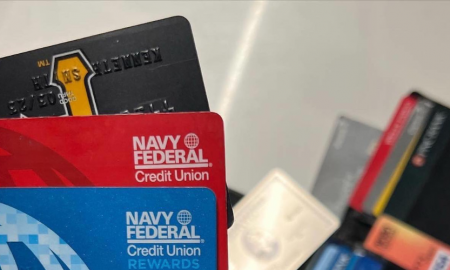
How to Make To-Do Lists Work For You and Get Things Done

When you’re overwhelmed with so much stuff to do, one of the ways most people turn to organize their life is the to-do list. However, it can be counterproductive when you end up keeping on chasing these lists and not knowing how to optimize its use. It will not only be a big waste of time, but it can also be a source of stress in your workplace.
One of the biggest mistakes that people make when it comes to to-do lists is focusing too much on the goals. Even smart people fall prey to this. People tend to forget to step back and recalibrate their focus. Those who attempt to do so often face distractions and scattered thoughts.
To maintain your focus, productivity guru David Allen recommends taking the time to know the right things to do versus the things that are not worth your time. He suggests adopting the “GTD” or Getting Things Done method. According to Allen, it has helped millions of people to clear their minds, sharpen their focus, and accomplish more with elegance and ease.

Cathryn Lavery/unsplash
The Getting Things Done method can help you optimize your to-do lists.
Capture
First things first: jot down all the things that consume your thoughts and attention. All those things that have been hovering on your mind; the need-tos, coulds, shoulds, ought-tos, and might-want-tos. These may be in the form of emails, paper piles, meeting notes, and scattered sticky notes just waiting to be handled.
After identifying these tasks, there’s no need to address them right away. Just gather all of them in one place. You can organize these in a variety of ways: through labeled trays, smartphone apps, emailing yourself, and voice reminders. After choosing a tool, make it a part of your daily life.
Clarify
After collating the tasks, process each of them and ask yourself if these are actionable. If yes, determine what to do next. Do it now if it can be done in less than two minutes. But if not, try to delegate it or schedule it for later. If it’s not actionable, discard it or store it for “someday”.
For this step, it’s all about engagement. It can be a bit tiring to do since it requires cognitive effort and people often avoid it by occupying themselves with other things. But if you skip this step, you can’t really achieve stress-free productivity.

Kelly Sikkema/unsplash
Identify which tasks are actionable, and which should you discard or stow away for much later.
Organize
For tasks that you want to do later, store and organize them to specific lists: list of one-off actions, list of project actions, and a calendar.
The one-off action list is composed of tasks that require only one step to complete. These can include basic errands like buying your vitamins or sending an RSVP email. Tasks that require more than one step belongs to the list of project actions. Making a sales pitch deck and doing a price comparison both fall under this category. As for the calendar, this is for tasks that have a specific time, location, and date involved.
Reflect
Simmer down and take time to reflect and get caught up with the tasks that need to be done. This is a way for you to stay on top of things. Make this habit a part of your regular schedule by frequently looking over your lists to determine what you should do next.
Then, assess yourself if you’re making progress. Where should you adjust your priorities and what kind of system is working for you? What needs to be done to improve the way you handle things?

Hadis Malekie/unsplash
Assess your productivity and determine points for improvement.
Engage
It’s all about taking the right actions for you to finish your work with confidence. Choose what needs to be done at that specific moment. As you do, try to evaluate the criteria that are limiting your capability to do tasks at that point in time:
Context
Whether you are in the office or on a flight to a business trip, identify the restrictions or limitations of your current situation. Through that, you can then identify which tasks you can do with what you have at that moment.
Time
What tasks you can do now is also dependent on your time availability. If you have a meeting in 15 minutes, this, of course, prevents you from starting a time-consuming task.
Energy
People tend to have fluctuating energy levels throughout the day. Identify which time of day you are most active and schedule more demanding tasks during that time. Choose those that match your energy level. If you feel that your energy is low, then do the easier tasks. You can also take a breather and go for a walk to refresh your mind.
Priority
With the time and energy you have, identify which task is the most pressing thing that you can do at that given moment.
More in Career
-
Ashton Kutcher’s Lucrative Business Ventures
Ashton Kutcher, a name that resonates with the silver screen’s allure, has emerged as a master of diverse talents, not confined...
December 8, 2023 -
Why American Consumers Are Falling Behind on COVID-Era Debt
When the world was grappling with the health crisis brought on by COVID-19, the U.S. economy faced an equally formidable challenge:...
November 27, 2023 -
Dr Dre and Ex-Wife Nicole Young Finalise $100m Divorce Settlement
After months of legal proceedings, Dr Dre, the legendary rapper, producer, and businessman, officially brought his tumultuous divorce from ex-wife Nicole...
November 22, 2023 -
5 Tell-Tale Signs That It Is Time to Say Goodbye to Your Current Job
Are you feeling like your job is more like a ball and chain than a fulfilling career? The daily grind, the...
November 19, 2023 -
WWE Signs $1.4 Billion Broadcasting Contract for SmackDown
In an explosive turn of events, World Wrestling Entertainment (WWE) has just unleashed some earth-shattering news for its legions of fans....
November 9, 2023 -
Navigating the Mortgage Maze as Interest Rates Take a Historic Leap
The U.S. housing market is nothing short of a dynamic entity. It evolves, reacts, and sometimes, just like the current real-estate...
November 3, 2023 -
Celebrity Couples Where the Woman Has a Higher Net Worth
In a world where gender roles and financial dynamics constantly shift, it’s not unusual to find celebrity couples where the woman...
October 27, 2023 -
Why the Gender Pay Gap Could Be Worsening
Picture this: Two college students, Alex and Charlie. Both are bright, have the same interests, and are ready to embrace the...
October 19, 2023 -
JC Penney’s Remarkable $1 Billion Revival Plan
In a remarkable turnaround, JC Penney unveiled a bold $1 billion revival plan, breathing new life into a brand that faced...
October 12, 2023















You must be logged in to post a comment Login